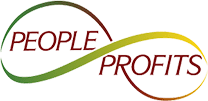
Two prime drivers of employee turnover are:
- When an employee cannot visualize how they directly contribute to organizational success and
- An employee not knowing how to increase their value to the organization and themselves
Both of these are of paramount importance in retaining and engaging employees. One of the companies which I was the VP of Human Resources for had a major problem with the first issue. I was preparing a presentation for our insurance companies. It was a general overview of what our company did and how the different business units worked together. As I was rehearsing the presentation, several employees came to me and ask if they could sit in. They wanted to listen as they had “no idea what we did as a business”. If they did not know what we did, how could they possibly see the connection between what THEY did and what WE did? Part of the recruiting and job description packages should include something which shows a direct path of how their success contributes to organizational success.
The vast majority of employees want to grow with the organization
The problem is the employees do not know enough about the goal and even less about the process. The employees are at the mercy of the organization. The vast majority of organizations do not do a good job of laying out a VALUE PATHTM which leads to value creation. The Value Path for each job classification should be a direct link between increasing employee value and increasing overall organizational value.
The value path should clearly define how an employee increases their value within the organization over time. The path should have clear objective markers for each step the employee needs to take to progress down the path. This path should be given to the employee during the recruiting process. This path should also clearly define how the employee benefits from progressing down the path.
The better the employee, the faster they will progress down the path
The path should allow the employee to move at their own pace. The majority of the communication should be between Talent Development/Training and the employee. The employees’ supervisor should have limited oversight involvement. In other words, once the employee has been approved for a specific path - the supervisor should not be a bottleneck to value creation.
How clear is the link between your employee value creation and organizational success?
